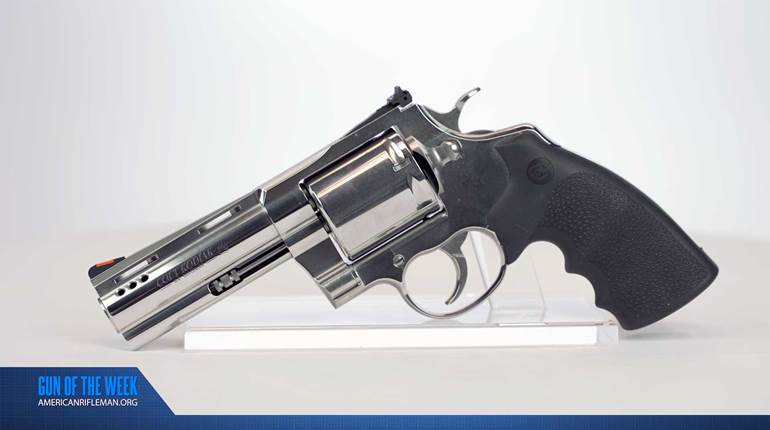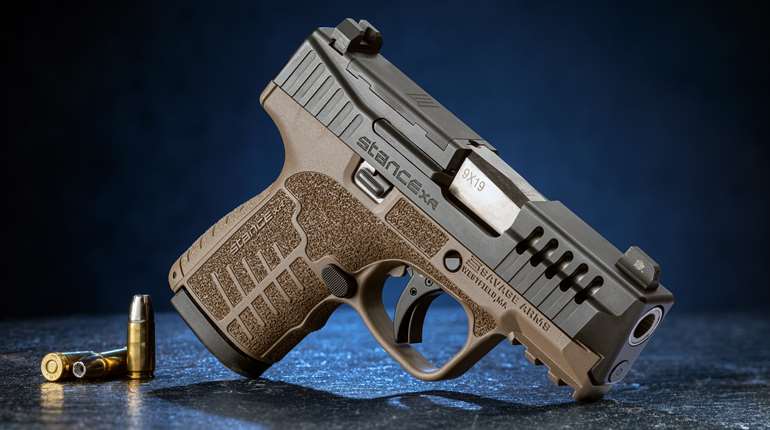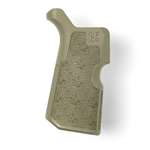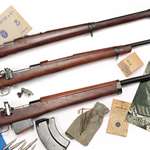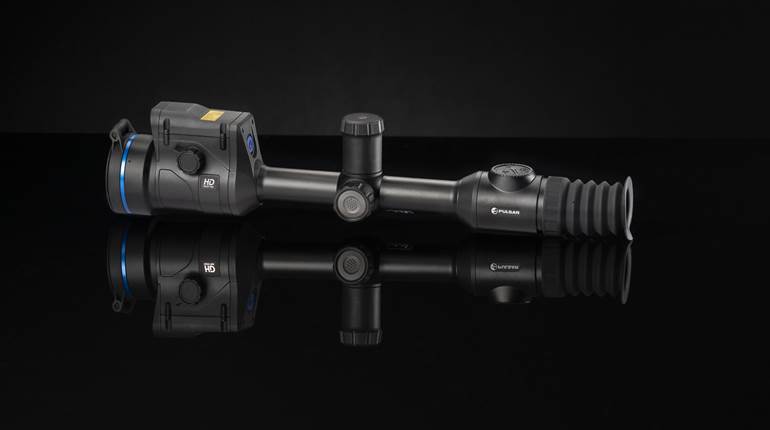
Although we think of Colt percussion revolvers as being an open-top design, there was one exception with a topstrap—the Colt 1855 Sidehammer Pocket Revolver. Also known as the Colt Root Revolver, after Elisha King Root, who developed the gun with Samuel Colt, the small, graceful 1855 Sidehammer was offered in .28 and .31 calibers. And true to its name, the 1855 featured a side-mounted hammer, much in the style of percussion rifles. This feature, plus a ratchet-style, Root-patented loading rammer (later incorporated into the Model 1860 Army) and a cylinder base pin that screwed into the frame from the rear, evolved into Colt’s Model 1855 Revolving Rifle.
The initial version, the “First Model” Sporting Rifle, was introduced in 1856 and featured a walnut stock, color-casehardened hammer and loading rammer, and barrels of varying calibers and lengths. Available with six-shot unfluted cylinders in .36 and .40 calibers (both rare) as well as in .44 caliber, it was also produced in more readily encountered .50- and .56-cal. versions with five-shot cylinders. A very few .64-cal. rifles are also known to exist, along with 20- and 10-ga. shotgun variants.

The outbreak of the Civil War spurred production of Model 1855 longarms, with barrel lengths from 21" to 37". Revolving Carbines, which normally did not feature wooden fore-ends and sometimes sported saddle rings, were chambered in .44 and .56 calibers, and they had barrel lengths from 15" to 24".
While the multi-shot capabilities of Model 1855 Revolving Rifles and Carbines were a battlefield “plus,” they were offset by the frequency of multiple discharges, which could severely injure a shooter’s supporting hand unless it was positioned underneath the trigger guard, away from the cylinder. Approximately 18,300 Colt Revolving Rifles of all types were produced between 1856 and 1864, when production stopped.
At first glance, this 21"-barreled Model 1855 Carbine, with its two-banded wooden fore-end, could be mistaken for a Sporting Rifle. However, the saber bayonet lug on the barrel, the sling swivels, the three-leaf sight graduated for 100, 300 and 500 yds. and the “U.S.” tang stamping identify it as a rare government-purchased military carbine. It could also be one of the even scarcer artillery models ordered by the Army in 1859, although those came standard with 24" barrels. Unfortunately, records are incomplete. Nonetheless, as discovered on the used gun rack of American Gun Works in Glendale, Calif. (americangunworks.net), this carbine is easily worth between $9,500 and $12,000.
Gun: Colt Model 1855 Revolving Carbine
Caliber: .56
Manufactured: 1856-59
Serial Number: 1079*
Condition: 60 percent—NRA Very Good (Antique Gun Standards)
Value: $9,500-$12,000
*Guns were numbered according to caliber and model, and accurate records are scarce; but this gun does not have the locking screw on the upper left-hand portion of the receiver, as seen on later models, confirming its early manufacture date.















